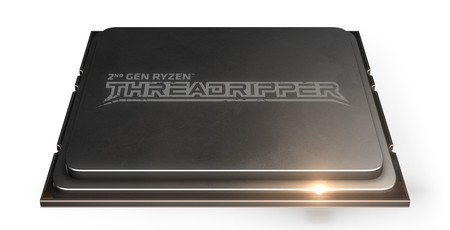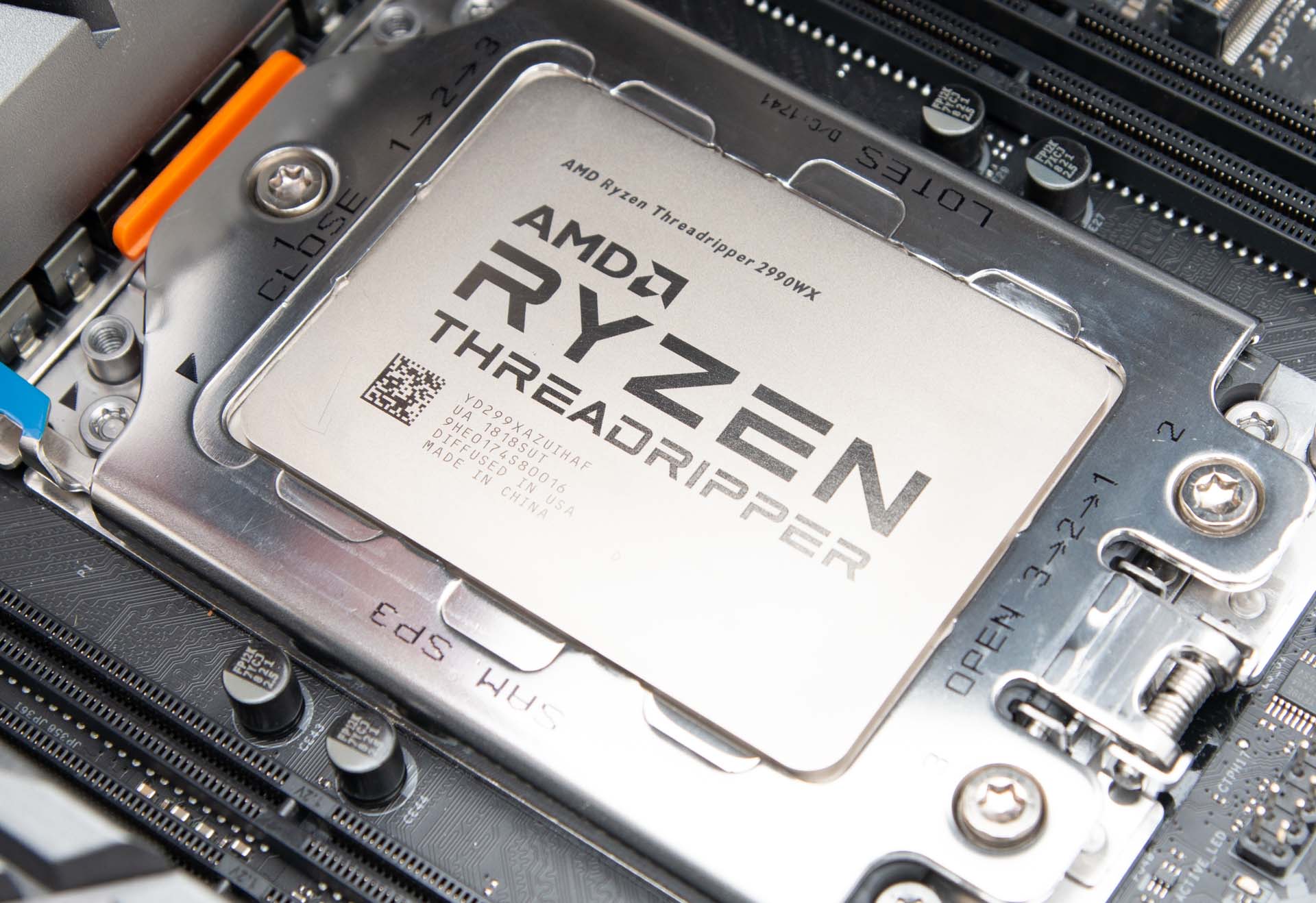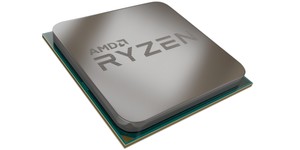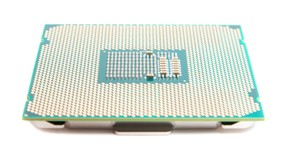
Overclocking
Starting with the Threadripper 2950X, and its predecessor was fairly lacklustre when it came to overclocking, leading us to conclude that the 1950X was best left too its own devices to benefit from its high boost speeds unless you needed maximum multi-threaded performance for most of the time. AMD has obviously improved both lightly-threaded and heaviliy-threaded boost performance with the 2950X, but there's a spanner in the works if our overclocking experience is anything to go by. We managed a stonking 4.2GHz all-core overclock using our maximum AMD vcore of 1.425V, which was also well within range of our 240mm liquid cooler.
This is just 200MHz south of what the CPU can achieve when boosting, with its all-core boost being even lower, which means that unlike the 1950X, the new CPU is arguably better when overclocked, losing only a little lightly-threaded performance, but gaining plenty of all-core performance. The Threadripper 2990WX is a very different proposition. As soon as you start dialling up the multiplier and CPU voltage, the temperatures under sustained heavy load skyrocket. We could get to 4.2GHz on all cores using a vcore of 1.425V, but while we nailed a Cinebench run, anything longer was beyond the limits of our cooler. In the end we reigned this into 4.1GHz and 1.4V, which passed much lengthier stress tests, albeit still with some toasty temperatures.
Performance Analysis
There's plenty to talk about, clearly, and starting with the Threadripper 2990WX, what the results clearly show is that the CPUs inner workings and software/OS support mean that tapping in to those 32 cores isn't likely to happen outside of high-end workstation workloads. HandBrake, for example, scales well with every other CPU and the 18-core Core i9-7980XE with our settings, with the encoding time falling from 64 seconds with the 10-core 7900X, to just 46 seconds with Intel's HEDT flagship. However, the fact that AMD's 16-core 2950X was faster than the 2990WX, means that it's simply not geared towards being the ultimate general-purpose HEDT CPU. We saw modest gains from tweaking AMD's Ryzen Master software and with SMT disabled, the HandBrake time fell from 56 seconds to 50 seconds, which beat the 2950X by one second. Similarly, with SMT enabled, but only two dies/16 cores enabled, the time was just 51 seconds.
PC Mark 10's Photo Editing test was a rare occasion a more general workload benefitted from those extra cores, but while the 2990WX was tope in the graph, it was so by fairly slim margins. Looking elsewhere, the 2990WX is once again, not a great option if you do anything other than workstation tasks, especially in games, sitting bottom of the pile in every test.
Fiddling with Ryzen Master again, Deus Ex saw a minimum frame rate of 39fps at stock speed, rising to 46fps with SMT disabled and finally 57fps with just 16 cores enabled with SMT. However, this still pales compared to the 67fps obtained by the Ryzen 7 2700X, but does at least match the Threadripper 2950X.
Tap into those 32 cores and 64 threads, though, and the Threadripper 2990WX is an absolute beast. It was 55 per cent faster than the Core i9-7980XE in Cinebench and reached a huge score of 6182 when overclocked, which is nearly twice as fast as the stock speed Intel CPU - bare in mind the two retail for similar amounts of cash. POV-Ray was another whitewash for AMD, where the 2990WX was a third quicker at stock speed and when overclocked. Finally, Blender also saw the 2990WX leave the Core i9-7980XE in its dust, where it was over 22 percent faster and even with a massive overclock, the Intel CPU still couldn't reign in AMD's flagship.

The Threadripper 2950X, on the other hand, performed admirably across our benchmarks, gaining some significaant ground over the 1950X thanks to AMD's improved boosting algorithms and higher clock speeds. It was six percent quicker at stock speed in HandBrake and eight percent once overclocked. It was nearly 16 percent quicker in PCMark 10's photo editing test and Cinebench's single core test revealed a massive boost from 164 points with the 1950X to 179 with the 2950X - that's a nine percent boost to single core performance.
The multi-threaded performance continued to impress, though, with a stock speed result of 41 seconds in POC-Ray compared to 39 seconds for the Intel Core i9-7980XE - not bad considering the Intel CPU costs twice the price. Gaming performance was mediocre and while AMD has made significant gains with its Ryzen mainstream CPUs, Threadripper still lags behind. It's worth remembering that switching to Game mode/Uniform memory access mode can also boost performance with 16-core and below Threadripper models as you can see in our previous testing. Intel's Core i9-7980XE is still dominates the HEDT line-up here, though, and in games such as Deus Ex, it proves it's a particularly good allrounder.
Conclusion
Threadripper 2990WX:
To start with then, let's talk about the 2990WX. There are clearly some concerning areas in our benchmark results, but it's important to realise what kind of CPU we're dealing with here, as plenty of us have likely got caught up on the hype train over the last few weeks. It's not simply a scaled up 2950X as we spoke about at length on the first page - the fact that two of the dies don't have direct access to the rest of the system will mean some software won't see the same kind of uplift many of us were maybe expecting. The fact is that some software doesn't scale well up to 32 cores and any issues that Windows also has that AMD is working on can also come into play. It's fairly clear, though, that the two additional dies are not pointless inclusions - you only have to look at the Cinebench, POV Ray, Blender and CPU-Z results to see that where all these cores are tapped into properly, the 2990WX is absolutely the CPU we hoped it would be - it's a monster and offers a huge amount more performance than the similarly-priced Intel Core i9-7980XE.
Where the 2990WX is maybe not what some may have been expecting, is outside of these workstation-focussed tasks. Gaming performance was poor in 32-core mode and only improves to medeocre levels once you start playing with core counts and SMT. Despite HandBrake claiming to offer poor scaling past 6 cores, we've seen good scaling up to the next most-powerful CPU, the 18-core 7980XE with our settings, but the same can't be said for the 2990WX, which was much slower. Even if scaling drops off a cliff after 20 cores, you'd still expect the 2990WX to perform better here so we can only assume this is something to do with its internal configuration or how it's handled by Windows or the application itself given the 2950X performed better. Disabling SMT offered a sizeable performance boost as did dropping to 16 cores, but it's still much slower than the Core i9-7980XE, especially so when the latter is overclocked.
In summary, then, the Threadripper 2990WX isn't a general purpose HEDT CPU in the way that the Threadripper 2950X and Core i9-7980XE are and whether that's a disappointment will largely depend on what you were intending to use it for. If you're looking to get the best performance and/or the lowest price to churn through POV RAY, Blender or Cinebench-type 3D modeling workloads, then the CPU is a winner both in performance and value terms. Nothing Intel has for desktop even comes close. However, if you'll be mixing those workloads with gaming, photo editing and using popular video editing and encoding applications such as HandBrake, then you'd be well advised to either use a separate system or opt for a more general-purpose HEDT CPU such as the Core i9-7980XE or Threadripper 2950X. Alternatively, you can consider switching to programs that do take full advantage of it. With that in mind, AMD has both won and lost here - the Threadripper 2990WX beats the Intel Core i9-7980XE in the workstation arena, but neither the 2990WX or 2950X better the Core i9-7980XE outside it as many of our benchmarks show. Thanks to its monolithic design, it performs well across the board whereas the 2990WX is only competitive in workstation tasks or applications that are able to take advantage of the way its 32 cores are configured.
Threadripper 2950X
The Threadripper 2950X, though, is hot on the Core i9-7980XE's heels and has made big gains over its predecessor plus, if our sample is anything to go by, offers considerably more overclocking headroom too. At the very least it makes Intel's 18-core even worse value than it was pitched against the Threadripper 1950X and coupled with some faster memory, it would likely boost its performance further still. In summary then, the Threadripper 2950X is an excellent successor to the 1950X and is faster across the board. The 2990WX is awesomely fast in workstation applications, but outside of these, the Threadripper 2950X is a much better bet.


MSI MPG Velox 100R Chassis Review
October 14 2021 | 15:04








Want to comment? Please log in.